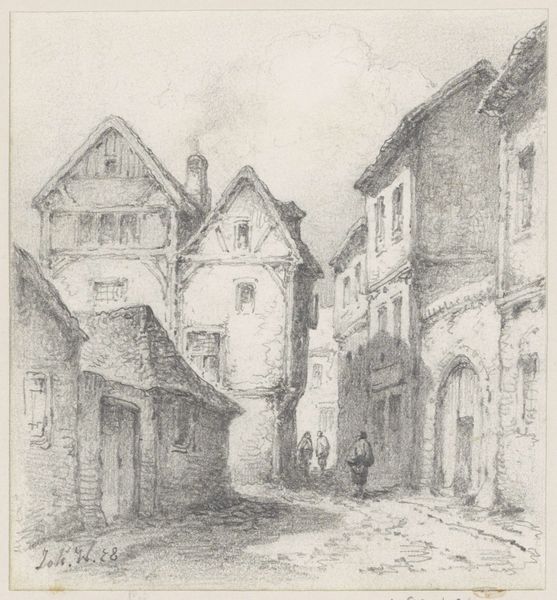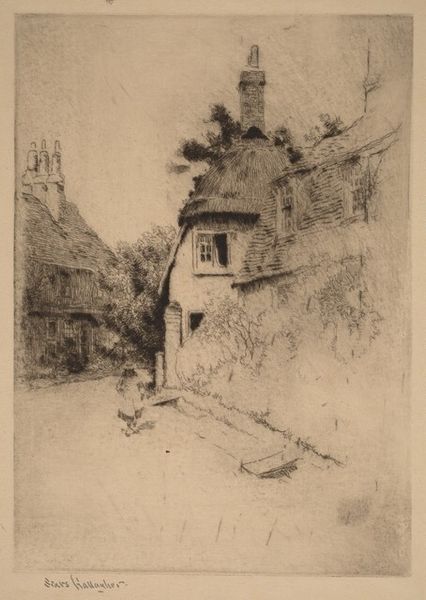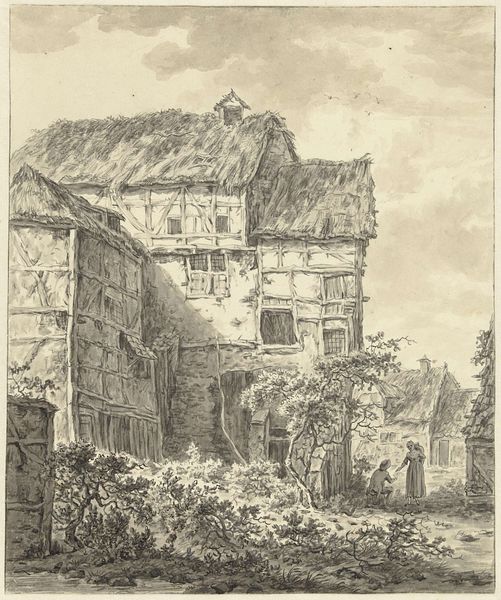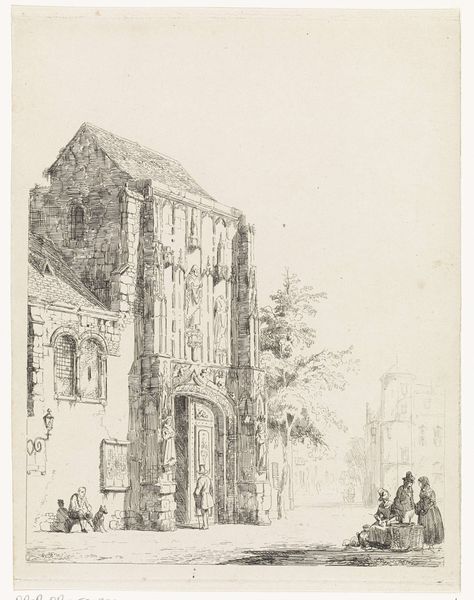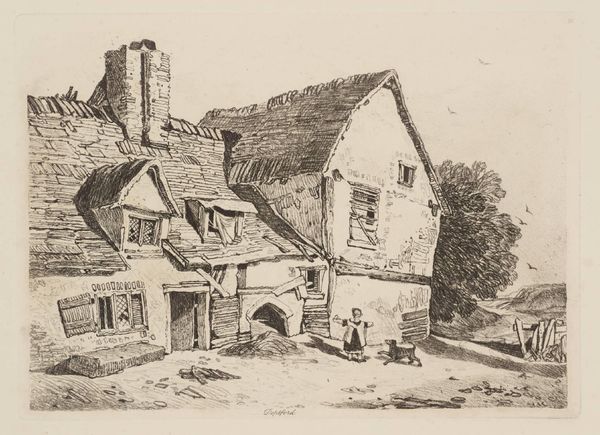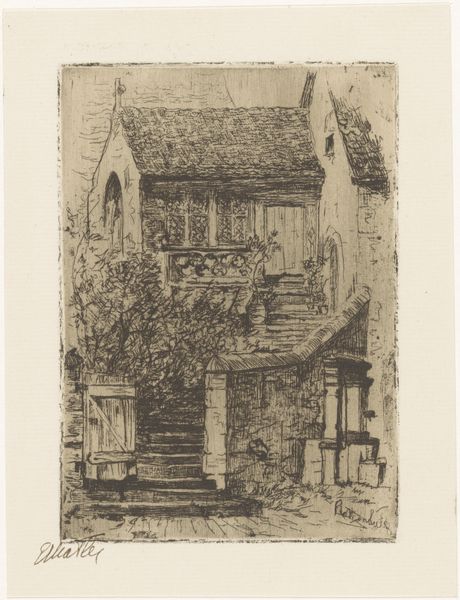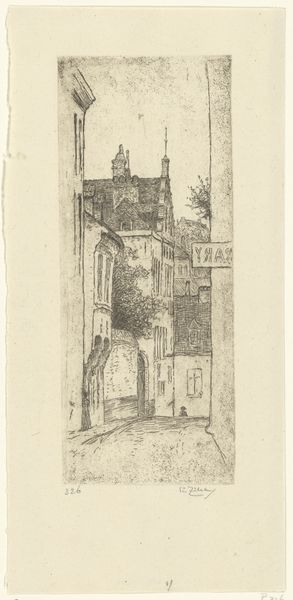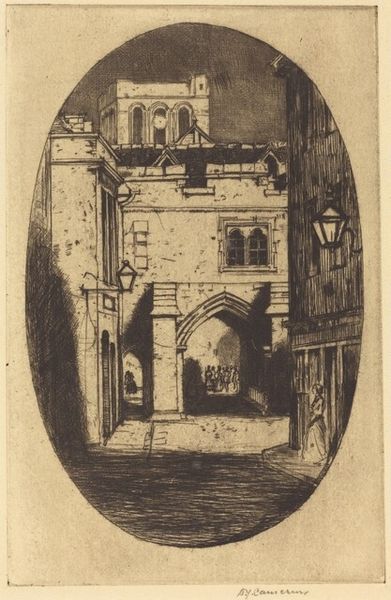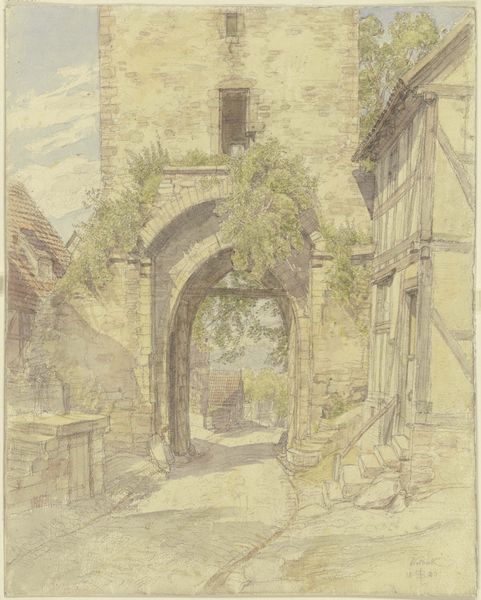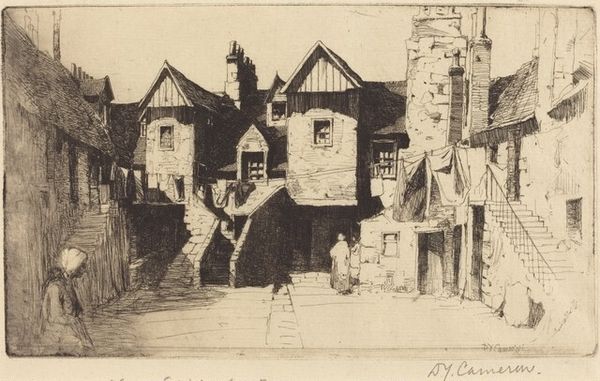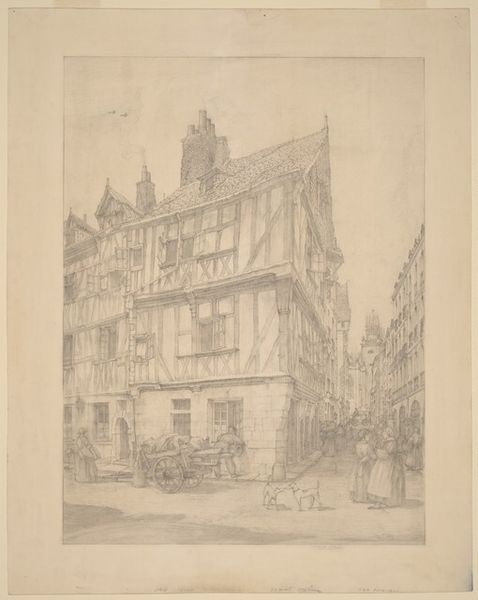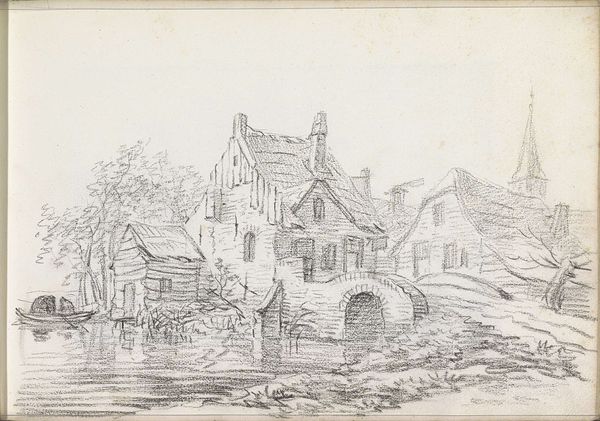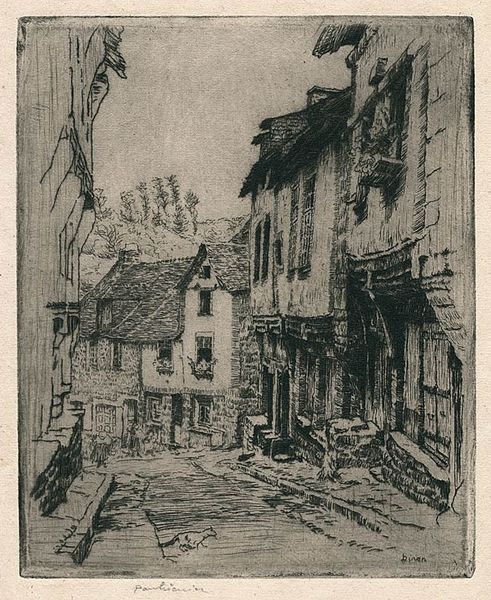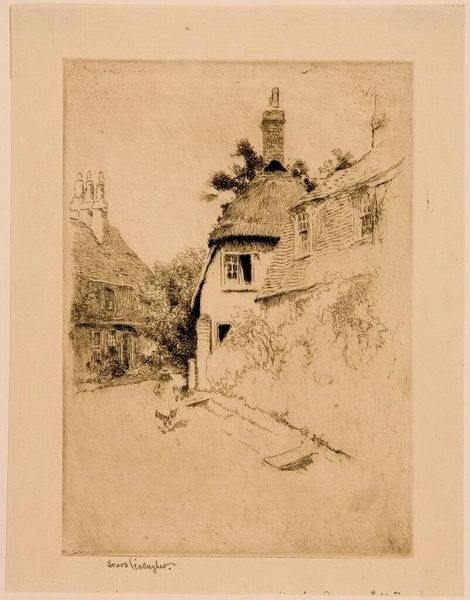
Copyright: Public Domain: Artvee
Editor: This is James Abbott McNeill Whistler’s "The Priest’s House—Rouen," around 1894, a pen and ink drawing. It’s a fairly small, intimate cityscape…I’m immediately drawn to the contrasts of light and shadow. How do you approach a piece like this from a formalist perspective? Curator: First, we observe the composition. Notice the dominant verticality, balanced by the arched doorway creating a strong central focus. Whistler employs delicate, almost ephemeral lines, characteristic of his style. Editor: Yes, the lines seem to fade in and out. Is that intentional? Curator: Indeed. Consider how the artist manipulates line weight to suggest depth and atmospheric perspective. The more definitive lines outline the architectural forms, while fainter lines capture the nuances of light on the building and cobblestone street. The texture almost gives the sense of optical painting where form is less important than overall impression. Editor: Optical painting? Curator: Yes, paintings like impressionistic watercolors that use tonal washes to create the atmosphere without concrete structural definition. Note also the limited tonal range—essentially variations of light and dark, almost monochrome. What does that restraint achieve, in your view? Editor: It forces the viewer to really look closely at the linework, at the details. It emphasizes the geometric shapes, like the windows and the rooflines, and the playful movement of the chickens in the lower field which serves to underscore the immobility of the buildings and person inside the archway. I wouldn't have thought of this being linked to Optical painting, but seeing that now, its clear Whistler is interested in making structure an experience for the viewer as much as an image of Rouen. Curator: Precisely. Whistler masterfully orchestrates these formal elements to convey a particular aesthetic experience beyond simply representing the scene. Do you find his efforts effective? Editor: Absolutely. Paying attention to the details of line, light, and geometric form is so enlightening. Thank you! Curator: It is the core of any formal analysis: discovering the artwork’s language for itself, not something superimposed from an external world.
Comments
No comments
Be the first to comment and join the conversation on the ultimate creative platform.
